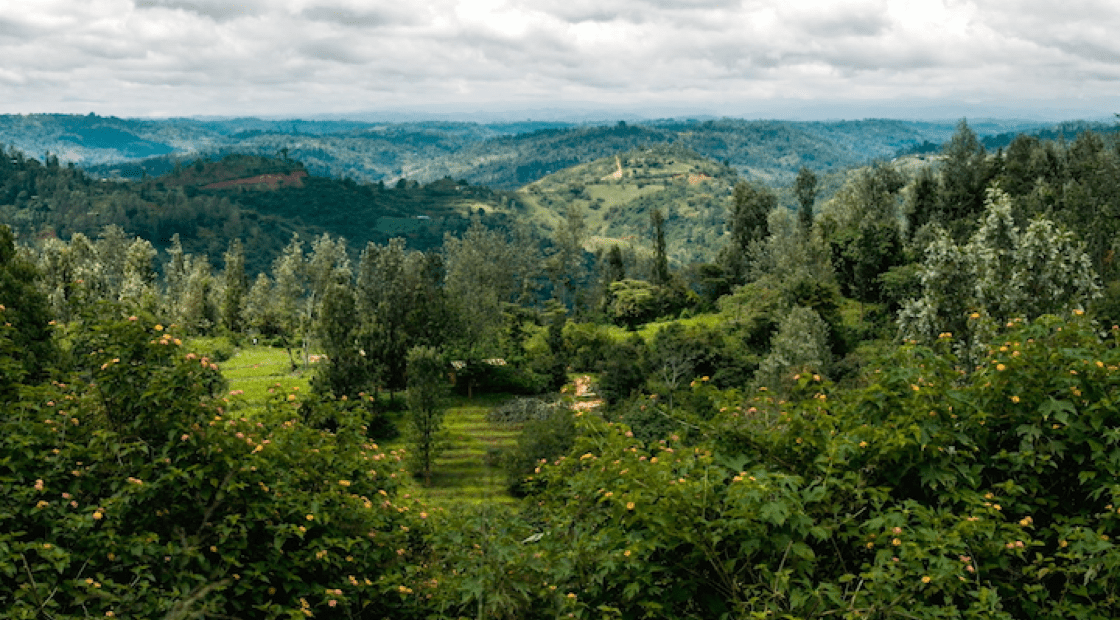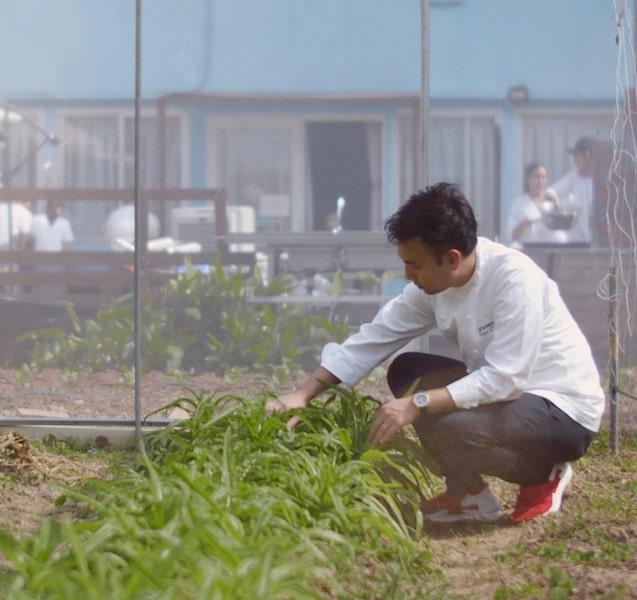“Coffee is a daily necessity to me. A double shot in the morning, a single shot at night, only then I can concentrate on my work. Yes, I only drink espresso. I love how it hits the spot right away,” said Antonio Lai, executive mixologist at VEA Lounge, who was rocking a vibrant patterned shirt, as he always does.
The Days Behind The Café Counter
Lai’s fondness towards coffee is very much tied to his professional journey. Even though he began working as a mixologist 20 years ago at an American restaurant and a bar, he had at one point turned his attention to coffee and even became a barista trainer. During that time, he discovered a lot about the world of coffee. And that knowledge has since been transformed into the cornerstone of his work and daily life, despite his return to mixology and winning multiple awards in the specialisation of multi-sensory mixology.
“Coffee has always been there in the history of the cocktail. Irish coffee is a classic created in the 1940s with coffee, Irish whiskey, cream and sugar. More recently, we have espresso martini with vodka added. Both are examples coffee-based cocktails,” Lai noted.

Creating Coffee Cocktails
The roasty beverage has lent itself to Lai’s cocktail creations on many occasions. He has used cold-brew coffee in his concoctions and also made ice spheres out of coffee, making it an important element in his drinks. Now, he has been inspired to come up with two cocktails by Nespresso Professional’s latest addition to the Exclusive Selection: Kenya Milima. In Hong Kong, the coffee is only supplied to one-Michelin-starred VEA, where Lai fell in love with the unique lemony acidity.
“On the first taste of Kenya Milima, there were strong fruity notes, combined with hints of grains and grass. The acidity was also outstanding — it was very light, but apparent — this flavour profile is rarely found in coffee. That left a deep impression on me.”
Optimal Acidity
Upon hearing the term acidic coffee, many people’s first instinct is to reject it. It’s not uncommon to find customers who say upfront that they don’t want beans with notes of acidity at coffee shops. In some cases, they confuse acidity, which is an indicator of quality, with the sourness of stale beans. For this reason, they cannot shake the negative connotation associated with sourness.
However, as the coffee drinkers become more educated these days, their preferences are changing. They are more concerned with the balanced taste of the beans. Since coffee beans are the seeds of a fruit, it’s normal that they would take on fruit acid and become acidic. Many aficionados also come to understand that many dark roasted beans are made that way to mask their flaws and lack of quality.
In comparison, light roasted beans have less room to hide. Their acidity is retained due to the shorter roasting process and is more expressive after brewing. So the wheel has finally turned in favour of acidic coffee. It’s now not just accepted but even sought after.

A Gift From Kenya
Premium fruit acid should be lively and bright. The sharp acidic flavour would gradually mellow into an endearing fruity aroma before ending in a fragrant sweetness, giving the coffee both texture and complexity. The acids frequently found in coffee include citric acid, malic acid, tartaric acid, acetic acid and quinic acid.
The acidity in Kenya Milima comes from citric acid and the unique flavour profile is considered a gift from Kenya. “Milima” in the Kiswahili language of the region means “highland”. The coffee plant is grown at 1,400m to 2,000m above sea level on volcanic soil that is full of nutrients. In addition, it stands right on the equator, which endows the terrain with long days and cool nights. All these factors help produce coffee cherries with excellent fruit acid and fruity scent. Complemented by the wet milling method adopted by the local producers, the beans’ citrusy acidity and green vegetal notes are kept intact.
Lai shared that such a flavour profile reminds him of pirates.
“One of sour, two of sweet; three of strong, four of weak; such is the recipe favoured by the pirates in their alcoholic drinks. Usually the sour refers to lime juice, the sweet comes from syrup, strong means rum and water is weak,” he explained. Based on that foundation, he developed his own version called Milima Punch, using Kenya Milima as the sour element for its great acidity. The sweet syrup is made with pineapple slow-cooked with star anise. This adds fruitiness to the cocktail. The other ingredients are rum (strong) and ginger beer (weak). The drink is infused with cinnamon smoke and covered with a slice of dried pineapple before serving.
He added: “When you take a sip, you’d feel a delicate fizziness which goes with the coffee’s unique acidity. It’s got so many different things for people to enjoy.”

Tickling The Senses
Beans and Drums is Lai’s other invention. Building on the traditional Espresso Martini recipe, he pairs Kenya Milima with vanilla vodka, syrup and Kahlua coffee liqueur. On the top of the beverage is a layer of pei pa koa (loquat syrup) foam, sprinkled with sugar and caramelised slightly with a blow torch. This cocktail exemplifies both the character of Kenya Milima and alcohol fragrance. A cool sensation emerges as it glides down the throat.
“The fruit acid in Kenya Milima really matches foamy cocktails. It also rounds out the sweet Kahlua perfectly — my creative process started from these ideas. At the end, I wanted to add a playful touch into it, so I burnt the foam a little to complete the multi-sensory experience,” Lai said.

Quality Control
Procuring coffee to use in cocktails isn’t any different from a chef picking his ingredients. And Lai is very selective of the raw materials he uses in his concoctions.
“The coffee needs to be freshly brewed, poured into the shaker while it’s hot with crema. It’s through this way we achieve a desirable result. Of course, the coffee’s quality has to be consistent,” Lai explained. Therefore, VEA Lounge employs the coffee machine from Nespresso Professional for commercial use.
“It allows me to quickly prepare fresh coffee with stable quality and taste. That’s a great help for me.”
The two cocktails prepared by Lai will be presented at The MICHELIN Guide Hong Kong Macau 2019 Gala Dinner on 11 December, served at the counter of Nespresso Professional, the official coffee partner of the MICHELIN Guide Hong Kong Macau. These cocktails will also be available at VEA Lounge from 12 December to 12 January.


















